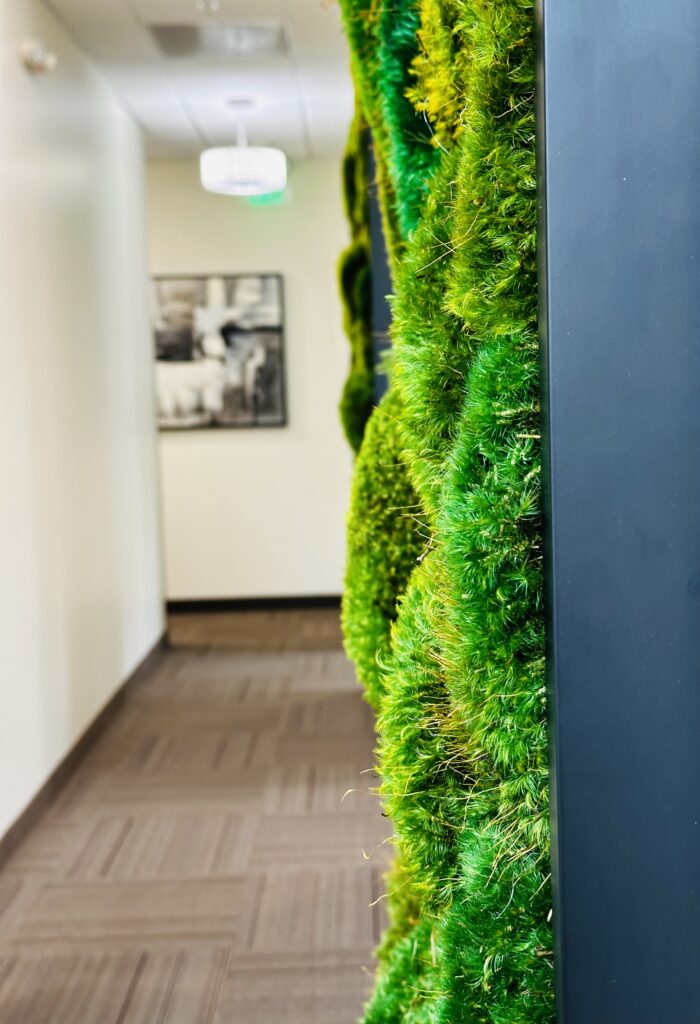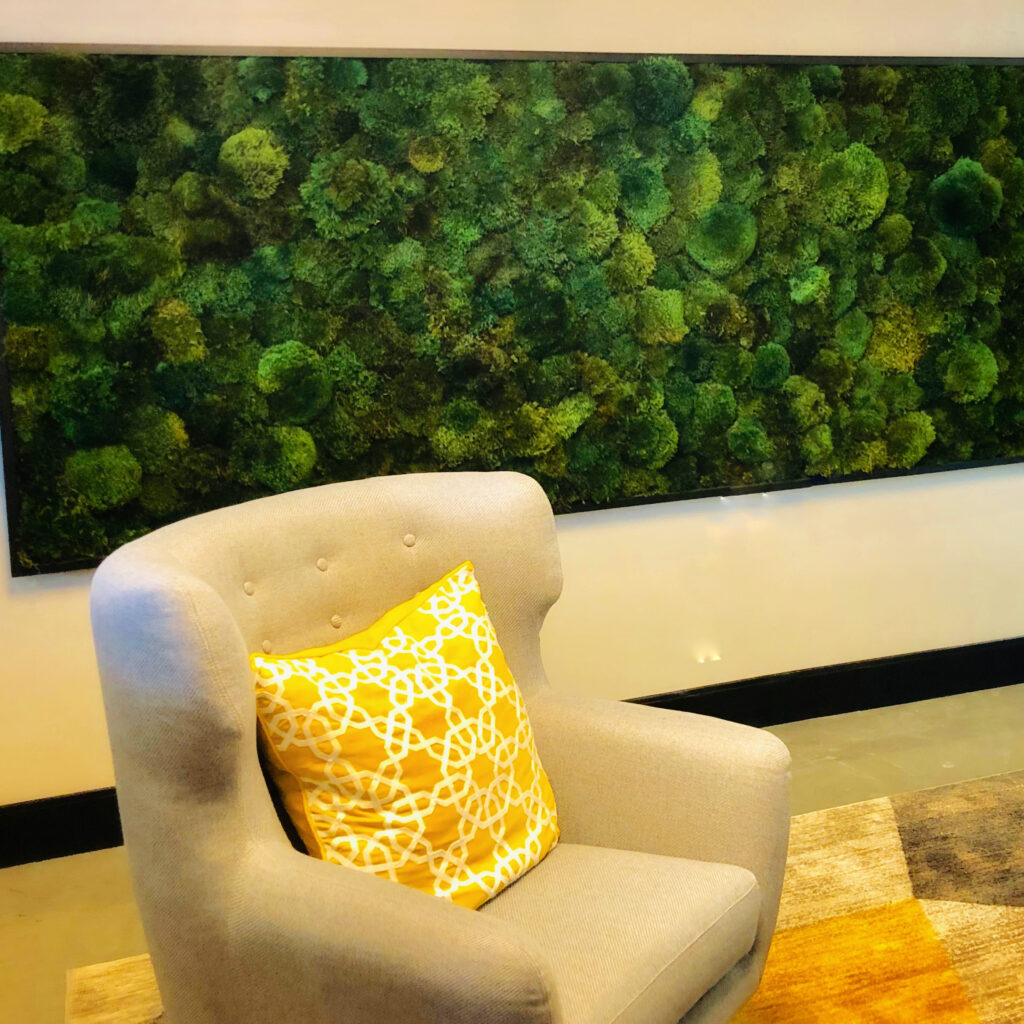If you find yourself reading this article, we probably don’t need to review the concept of biophilic design or the 14 Patterns of Biophilic Design set forth by the brilliant minds at Terrapin Bright Green. This article stems from years of research, first-hand monitoring of senior living environments, and careful notations regarding the challenges architects, developers, staff and residents face in balancing a multitude of needs, including memory care.

Pillow moss frame by The Fat Plant Society
Those needs range from sustainable building materials (for cost savings as well as green building) to wipable and hygienic surfaces to effectively managing the workload of staff and caregivers. Last, but certainly not least is the well-being of senior living residents. Architecture, building design and interior design play a significant role not only in overall perceptions of wellness but also in mitigating memory issues, anxiety, and improving mood and perceptions of well-being (both physical and psychological).
We have a solution that ticks all of the boxes and goes a step further in stimulating minds and enhancing well-being and aesthetics in any senior living environment. Our inspiration for this “deep dive” into the benefits of biophilic design in senior living communities stems from an Environments for Aging article titled, “Digging Deeper” by Catie Ryan, Lara Slavkin, and Jay Weingarten of RDG Planning and Design. It’s an article we have returned to as the authors posit:
“Holistic biophilic design–that is, design that looks at the whole user experience rather than only one or two elements–targets specific health outcomes initiated by intrinsic responses to nature that are deeply embedded within human biological cycles and systems (circadian rhythms, heart rate, blood pressure, stress hormone levels and immune system)” (Ryan, Slavkin, Weingarten, 2021).




